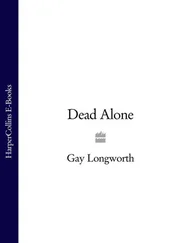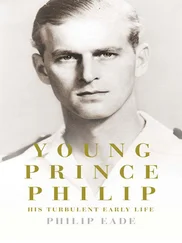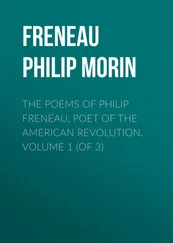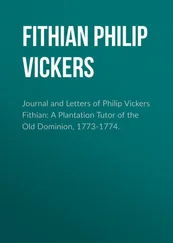However, the Church, which had originally been established by secular authority and had long been the staunch supporter and protector of Russia’s secular rulers, constituted a major obstacle to Ivan’s plans. It was absorbing too many resources, in that its landed property comprised a major, if not the largest, proportion of Russia’s total cultivated surface, and its wealth had been extended by legislation of 1550 which the twenty-year-old Ivan did not want but could not at that time resist. By mid-1563 his relations with the Metropolitan, Makarii, had reached breaking point, and when Makarii left Moscow for a monastery it was taken as a sign that he disapproved of the Tsar. The Tsar, however, was soon to show that he, too, could exert moral pressure in a similar time-honoured way. The Metropolitan had support among the elite, and even some of Ivan’s closest advisers, including his former friend Prince Andrei Kurbskii and Boyar Mikhail Repnin, who had invested Ivan with his crown at the coronation ceremony.
The Tsar’s attempt to restrict the Church’s wealth and to challenge its property rights breached precedent, but it should not be supposed that even the Metropolitan’s opposition was founded solely on moral, still less legal or constitutional, grounds. Protecting property was a major concern of both clerics and laity, and it should be borne in mind that an alternative model of government, which respected traditional rights and especially property, was evident in neighbouring Poland-Lithuania. Kurbskii himself was of Lithuanian descent (his family, like many others, espoused Russia because it defended the Orthodox religion against the inroads of the Catholic Church), and now that Poland was wooing his like he soon availed himself of its protection, fearing for his life in Russia.
The murder of Ivan’s opponents and suspected opponents had begun in 1563. Its purpose was to secure the throne from challenge, but opposition persisted and the Church still tried to restrain the Tsar. The pressure was maintained even after the death of Metropolitan Makarii, in December 1563, and then, a year after Makarii’s death, Ivan himself played the moral blackmail card. In December 1564 he swept out of the Kremlin together with his family and a strong force of armed retainers. He went briefly to Kolomenskoe, a short distance downstream from Moscow, where he celebrated Christmas, and then moved on to the suburb of Alexandrova. He had taken with him his entire treasury and many of the most precious icons and liturgical objects from the Kremlin churches. It was as if he were trying to strip the Metropolitan and other prelates who were opposing him of their legitimacy. In turning his back on Moscow, Ivan was metaphorically shaking the dust off his feet, as the Apostle Matthew and Saint Paul had done. Interpreting the symbolism of the occasion, Professor Floria explains that ‘In effect the Tsar was giving the ruling elite an ultimatum: either they must abandon their traditional ways which obstructed the Tsar’s freedom of action, or else they would have to go to war against their legitimate ruler — a war in which the Tsar could call on the armed service gentry and would enjoy the support of the population of Moscow.’ 23
Ivan timed his move shrewdly. Servicemen, who now fulfilled civil as well as military functions, could not function without the Tsar’s authority, so there was a danger that the administration of the realm might suffer a progressive collapse. 24Those opposed to him did not relish a fight at a time when the country was engaged in war on two fronts and the Tsar was so evidently popular. Besides, state and Church were supposed to work in symphony, and the evident breakdown in their relationship redounded as much to the Metropolitan’s discredit as to the Tsar’s — even more so in the mind of the people. A vast crowd of concerned Muscovites followed Ivan to Kolomenskoe. Before long a delegation of top-level clergy and members of the Tsar’s own council 25of top administrators and advisers made their way to Alexandrova to beg him put his anger aside and rule as he wished. In effect Ivan was given carte blanche to punish those who disobeyed him and anyone he considered a traitor — without the formality of a trial. Boyars Mikhail Repnin and Iurii Kashin were soon numbered among the victims; Kurbskii had fled.
The purge was not the whim of a half-crazed paranoiac, which is the line of one popular genre of literature about Ivan. His plan was to eliminate opposition to his exercise of autocracy, which he deemed essential if Russia were to fulfil its imperial potential. 26He justified this in a letter to the defector Kurbskii, who had upbraided him for abusing his authority. In it he accused Kurbskii of calumny and of advocating ‘the rule of servants over the heads of their masters [whereas he, Ivan, was trying] zealously to lead people to the truth… so that they may know the one true God… and… cease from internecine strife… which causes kingdoms to crumble… If a tsar’s subjects do not obey him they will forever be at war with one another.’ 27This was written in the same spirit as Thomas Hobbes was to write Leviathan a century later. What Ivan was advocating was closely related to what came to be known in western Europe as absolutism.
Ivan’s method, however, was not simply to appropriate the estates of the wealthy hereditary aristocracy and deprive the aristocrats of influence, as some popular histories have suggested. The aristocracy was to remain wealthy and powerful. Rather, he wanted to disperse its landholdings, to render the aristocrats incapable of mobilizing a power base against their ruler, which they could have done if their estates had remained concentrated. It was, in fact, a safeguard for the state and for good order. In neighbouring Poland-Lithuania, by contrast, the magnates were in fact able to mobilize against the king, and this ability was soon to be transformed into a legal right to rebel — a tradition which was to render the country ungovernable.
The reign of terror had the effect of transforming the old hereditary aristocracy — the princes descended through so many genealogical lines from Riuruk and the so-called ‘non-titled’ aristocrats, scions of those families who had distinguished themselves through service to ruling grand princes through the generations — into a service aristocracy. From now on Russian noblemen, high as well as low, needed the tsar’s approval, or at least his toleration, and it became the convention for younger aristocrats to serve at court and seek the ruling tsar’s patronage. 28In order to assuage the feelings of the old nobility and to encourage the new service class, a new practice called mestnichestvo was tolerated by the state. According to this, appointments to commands were allotted partly on the basis of the family’s past association with those commands, so that they tended henceforth to be perpetuated in particular families. But the noble class, which in any case had no autonomous corporate tradition, became the servants of the tsar. The revolution was not accomplished overnight. But Ivan succeeded in establishing the principle, and it is curious that the devices used by Louis XIV to counter localism at his grand court at Versailles had been initiated over a century earlier at the other end of Europe
Ivan ensured that Russia would be able to administer an empire. However, he used draconian means. The image of his black-cowled oprich-niki sweeping through a locality in an orgy of killing — and there were such occasions — draws attention to the purpose of that singular institution the oprichnina. On the one hand it was an instrument of permanent purge, a means of maintaining tension and fear of the Tsar; on the other hand it was a means of overcoming the convention which regarded all Church endowments as sacrosanct and hence untouchable by the secular power. Given the practice of pious (and increasingly prosperous) Russians making over large gifts to monasteries for the salvation of their souls, huge resources were going to the Church which might otherwise have produced revenue for the Tsar. The government’s concern about this had been evident as early as 1551, when a general review of all charters granting property to monasteries had been carried out. 29However, no way had been found to obviate the problem by legal means. In England the problem had been solved by the dissolution of the monasteries, but in Holy Mother Russia such a Protestant solution was unthinkable.
Читать дальше





![Stephan Orth - Behind Putin's Curtain - Friendships and Misadventures Inside Russia [aka Couchsurfing in Russia]](/books/415210/stephan-orth-behind-putin-s-curtain-friendships-a-thumb.webp)





